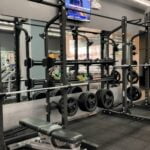What are the different exercises for fitness? Exercise is a crucial component of maintaining overall health and wellness. In this article, we will explore the various types of exercises that contribute to physical fitness, including cardiovascular exercises, strength training, flexibility and mobility workouts, high-intensity interval training (HIIT), cross-training, functional fitness, and mind-body exercises. Each type of exercise offers unique benefits and plays a vital role in creating a well-rounded fitness routine.
First and foremost, it is essential to understand the importance of exercise for achieving and maintaining fitness. Regular physical activity not only helps in weight management but also improves cardiovascular health, boosts mood, enhances mental clarity, and promotes better sleep. By incorporating a variety of exercises into your routine, you can target different aspects of fitness and work towards a balanced and healthy lifestyle.
Cardiovascular exercises such as running, swimming, cycling, and jump rope are great for improving heart health and endurance. Strength training with weightlifting, bodyweight exercises, or resistance band workouts helps build muscle mass and strength. Flexibility and mobility workouts like yoga, Pilates, and stretching exercises improve range of motion and prevent injury.
High-intensity interval training (HIIT) with burpees, sprints, or Tabata workouts offers a quick but effective way to improve both cardiovascular fitness and muscular endurance. Cross-training involves incorporating different types of exercises to ensure a well-rounded workout routine while functional fitness focuses on mimicking everyday movements to improve strength and balance. Lastly, mind-body exercises like Tai Chi, Qi Gong, and meditation contribute to overall wellness by promoting relaxation and stress reduction.
Cardiovascular Exercises
Cardiovascular exercise is an essential component of any fitness routine as it helps to improve heart health, endurance, and overall cardiovascular function. There are many different exercises that fall under the category of cardiovascular workouts, each offering unique benefits for the body. Whether you prefer high-impact activities like running and cycling or low-impact options like swimming and jump rope, there are plenty of options to choose from to get your heart pumping.
Running
Running is one of the most popular forms of cardiovascular exercise, as it requires minimal equipment and can be done almost anywhere. Whether you prefer jogging through your neighborhood or hitting the trails for a more challenging terrain, running can help improve cardiovascular health, build leg strength, and boost overall endurance.
Swimming
Swimming is a fantastic full-body workout that is gentle on the joints, making it an ideal exercise for individuals with joint pain or arthritis. It provides excellent resistance training for the upper body while also engaging the core and lower body muscles. Regular swimming can help improve lung capacity, flexibility, and overall cardiovascular fitness.
Cycling
Cycling is another low-impact cardiovascular exercise that offers a great way to get outdoors and explore new areas while improving overall fitness. Whether you prefer road biking or mountain biking, cycling helps to strengthen leg muscles while also providing a good cardio workout. It’s a great option for those looking to improve stamina and endurance without putting excess strain on their joints.
Jump Rope
Jumping rope is not just child’s play; it’s actually an effective form of cardio that can easily be incorporated into any workout routine. Jumping rope improves coordination, footwork, agility, and provides an intense cardiovascular workout in a short amount of time. It’s a convenient and cost-effective way to elevate heart rate and burn calories effectively.
By incorporating a mix of these different exercises into your fitness routine, you can keep things interesting while reaping the numerous benefits associated with cardiovascular exercise. And don’t forget to consult with a fitness professional if you need guidance on how to safely incorporate these exercises into your routine.
Strength Training
When it comes to improving muscular strength and endurance, strength training exercises are essential. These exercises help in building and toning muscles, increasing bone density, and boosting metabolism. Here are some of the different types of exercises for fitness that fall under strength training:
1. Weightlifting: This includes using free weights such as dumbbells, barbells, and kettlebells, as well as using weight machines at the gym. Weightlifting exercises target specific muscle groups and can be customized based on individual fitness goals.
2. Bodyweight Exercises: These exercises use your own body weight for resistance, making them versatile and accessible for all fitness levels. Examples include push-ups, squats, lunges, and planks.
3. Resistance Band Workouts: Resistance bands are a great alternative to traditional weights and offer a variety of resistance levels to challenge different muscle groups effectively.
Incorporating these strength training exercises into your fitness routine can help improve overall muscle tone, increase strength and power, and reduce the risk of injury during other physical activities. It is important to consult with a fitness professional or personal trainer to ensure proper form and technique when performing these exercises.
Remember that a well-rounded fitness routine should include a combination of cardiovascular exercises, flexibility training, high-intensity interval training (HIIT), cross-training, functional fitness exercises, and mind-body workouts for comprehensive physical wellness. Keep in mind the importance of rest days for muscle recovery to avoid overtraining and injury.
Flexibility and Mobility
Yoga
Yoga is a form of exercise that focuses on flexibility, strength, and breathing techniques. There are many different styles of yoga, each with its own unique benefits. From slow-paced Hatha yoga to vigorous Vinyasa flow, there is a style of yoga suitable for everyone regardless of age or fitness level. The various poses and stretches in yoga help improve flexibility in the muscles and joints while also promoting relaxation and stress relief.
Pilates
Pilates is a system of exercises designed to improve physical strength, flexibility, and posture. It emphasizes proper alignment, core strength, and muscle balance. Pilates can be done using specialized equipment or with just a mat, making it accessible for individuals of all ages. The controlled movements in Pilates help elongate and strengthen the muscles while also improving overall body awareness.
Stretching Exercises
In addition to yoga and Pilates, incorporating stretching exercises into your fitness routine is crucial for maintaining flexibility and preventing muscle tightness. Dynamic stretching before a workout helps prepare the body for movement by increasing blood flow to the muscles. Static stretching after exercise helps improve flexibility by elongating the muscles when they are warm. Regular stretching can also alleviate muscle tension and reduce the risk of injury during physical activity.
Incorporating flexibility and mobility exercises such as yoga, Pilates, and stretching into your regular fitness routine can have long-lasting benefits for your overall health and well-being. These exercises not only improve range of motion but also promote relaxation while reducing the risk of injury during physical activity.
Whether you’re looking to increase flexibility, enhance strength or simply de-stress, these exercises provide an effective way to achieve your fitness goals while maintaining a healthy balance in your life.
High-Intensity Interval Training (HIIT)
High-Intensity Interval Training (HIIT) is a popular and effective form of exercise that involves short bursts of intense activity followed by brief periods of rest or lower-intensity exercise. HIIT workouts are known for their ability to torch calories, improve cardiovascular endurance, and increase overall fitness in a relatively short amount of time. Here are some different exercises for fitness that can be incorporated into a HIIT routine:
- Burpees: This full-body exercise combines a squat, push-up, and jump into one fluid movement. It targets multiple muscle groups and gets your heart rate up quickly, making it an ideal exercise for HIIT.
- Sprints: Sprinting is another high-intensity exercise that can be tailored to fit any fitness level. Whether on a track, treadmill, or outdoor terrain, sprint intervals can be alternated with periods of walking or light jogging for an effective HIIT workout.
- Tabata Workouts: Tabata training follows a specific protocol of 20 seconds of all-out effort followed by 10 seconds of rest, repeated for a total of eight rounds. This format can be applied to exercises like squats, push-ups, mountain climbers, and more for an intense and efficient HIIT session.
These are just a few examples of the many exercises that can be included in a High-Intensity Interval Training routine. Incorporating HIIT into your fitness regimen can help you maximize calorie burn, improve endurance, and elevate your overall level of physical conditioning.
As with any new workout program, it’s important to start at an appropriate intensity level based on your current fitness level and gradually progress as you become more comfortable with the exercises. Whether as part of a broader fitness plan or as standalone workouts, HIIT exercises offer an efficient way to challenge yourself and see results in less time than traditional steady-state cardio or strength training routines.
Overall, High-Intensity Interval Training offers a versatile and dynamic approach to exercise that can benefit individuals looking to improve their cardiovascular fitness, burn fat, and enhance their overall physical performance. By incorporating different forms of high-intensity exercises such as burpees, sprints, tabata workouts into your regular routine.
Cross-Training
When it comes to maintaining a well-rounded fitness routine, cross-training is an essential component. Cross-training involves incorporating different types of exercises into your workout regimen, allowing you to target various muscle groups and prevent boredom or plateau. By diversifying your workouts, you can also reduce the risk of overuse injuries and improve overall physical performance.
One of the key benefits of cross-training is the ability to engage in different forms of exercise that cater to different fitness components such as cardiovascular endurance, strength, flexibility, and balance. For example, by combining cardiovascular exercises like running or swimming with strength training exercises such as weightlifting or bodyweight workouts, individuals can optimize their overall fitness level and achieve better results. Additionally, cross-training provides a great opportunity to explore new activities and find enjoyment in working out.
Incorporating cross-training into your fitness routine can also help alleviate boredom by preventing monotony in your workouts. It allows you to mix things up and keep things interesting by trying out different activities, which can ultimately lead to greater adherence and consistency in exercising.
Whether it’s participating in a dance class, engaging in martial arts training, or incorporating Pilates sessions into your weekly schedule, cross-training offers a wide range of options to keep your workouts fun and exciting while reaping the benefits of various exercises for fitness.
Functional Fitness
Some examples of functional fitness exercises include squats, lunges, deadlifts, and push-ups. These movements replicate actions such as bending down to pick up objects, climbing stairs, or pushing heavy items. By incorporating these exercises into a workout routine, individuals can improve their ability to perform these tasks with ease in their daily lives.
In addition to traditional exercises, functional fitness also includes the use of equipment such as kettlebells, medicine balls, and resistance bands. These tools add resistance and instability to movements, challenging the body to stabilize and control its muscles effectively. As a result, individuals can improve their coordination, balance, and overall physical function.
| Functional Fitness Exercises | Benefit |
|---|---|
| Squats | Improves lower body strength and mobility |
| Lunges | Strengthens leg muscles and enhances balance |
| Push-ups | Enhances upper body strength and stability |
Mind-Body Exercises
Mind-body exercises are a crucial component of a well-rounded fitness routine, focusing on the connection between physical movement and mental well-being. Tai Chi, Qi Gong, and meditation are popular forms of mind-body exercises that have been practiced for centuries due to their numerous health benefits.
Tai Chi is a gentle form of martial arts that involves slow and graceful movements, emphasizing balance, strength, and flexibility. It has been shown to improve muscle strength, reduce stress, and enhance overall mood. Qi Gong, on the other hand, focuses on the coordination of breath and movement to promote relaxation and inner peace. This ancient Chinese practice is known for its ability to increase energy levels and improve mental clarity.
In addition to these physical practices, meditation is also an essential aspect of mind-body exercises. Incorporating meditation into your fitness routine can help reduce stress, improve focus, and promote emotional well-being. Whether it’s through mindfulness meditation or guided visualization, taking time to quiet the mind can have profound effects on both mental and physical health.
| Mind-Body Exercise | Health Benefits |
|---|---|
| Tai Chi | Improves muscle strength, reduces stress, enhances mood |
| Qi Gong | Increases energy levels, promotes relaxation, improves mental clarity |
| Meditation | Reduces stress, improves focus, promotes emotional well-being |
Overall wellness encompasses both physical and mental aspects of health. Mind-body exercises like Tai Chi, Qi Gong, and meditation play a vital role in achieving this balance by promoting relaxation, reducing stress levels, improving mental clarity and enhancing emotional well-being. Adding these exercises to your fitness routine can lead to improved overall wellness that goes beyond just the physical benefits of exercise.
Conclusion
In conclusion, there are countless options when it comes to choosing exercises for fitness. From cardiovascular exercises like running and swimming to strength training with weightlifting and bodyweight exercises, the key is to find a well-rounded routine that works for you. Flexibility and mobility exercises such as yoga and Pilates can improve your range of motion, while high-intensity interval training (HIIT) can provide an efficient way to boost your cardiovascular health and endurance.
Cross-training is another important aspect of a comprehensive fitness routine, as it allows you to incorporate different types of exercises to challenge your body in new ways. Functional fitness exercises that mimic everyday movements can improve your strength, balance, and coordination, while mind-body exercises like Tai Chi and meditation can contribute to your overall wellness. By combining these different types of exercises, you can create a comprehensive fitness routine that targets all aspects of physical health.
In the end, the most important thing is to find exercises that you enjoy and that work for your individual needs and goals. Whether it’s through traditional workout methods or trying something new like aerial yoga or rock climbing, finding what brings you joy is essential for maintaining a consistent fitness routine. So take the time to explore what’s out there and experiment with different types of exercise until you find what works best for you.
Frequently Asked Questions
What Are the 4 Types of Fitness Exercises?
The four types of fitness exercises are endurance, strength, balance, and flexibility. Endurance exercises improve the cardiovascular system, while strength exercises build muscle. Balance and flexibility exercises help improve stability and range of motion.
What Is the 10 Best Exercise?
The 10 best exercises are subjective and can vary depending on individual fitness goals. However, some commonly recommended exercises include squats, lunges, push-ups, planks, deadlifts, running or walking, cycling, swimming, yoga, and HIIT workouts. These exercises target various muscle groups and promote overall fitness.
What Are the 5 Types of Fitness?
The five types of fitness are cardiovascular endurance or aerobic exercise, muscular strength training, muscular endurance activities like resistance training or weightlifting for multiple repetitions with lighter weights than used in maximum strength exertion capacity. Flexibility training designed to increase range of motion through the muscles-tendon connective tissues.
And finally body composition trips to decrease fat mass increase the lean mass to improve health outcomes

Passionate about providing useful information to anyone with an interest in the field of Personal Training, I strive to pass on to our readers quality information and to answer any questions about Personal Trainers, the work they do and how to become one.





